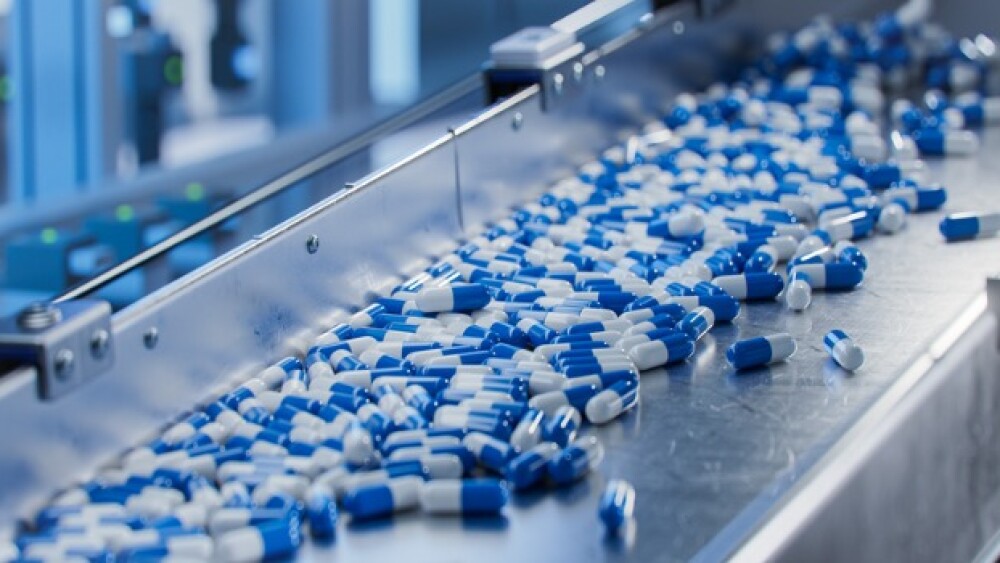BioSpace spoke to analysts and players in the contract manufacturing and development organizations space to assess the challenges this year and what lies ahead in 2024.
Pictured: Capsules in a production line at a pharmaceutical manufacturing plant/iStock, SweetBunFactory
Contract manufacturing and development organizations have experienced less than smooth sailing in 2023. Some of the biggest names in the CDMO field have been hit with rocky financial quarters this year, while some of the smaller players have also encountered some choppy waters.
BioSpace talked to some analysts and industry experts in the CDMO field to gauge the issues that occurred in 2023, where headwinds remain and what is potentially positive on the horizon.
The Big Names
Catalent, one of the more prominent names in contract manufacturing, had a rough start to 2023. In April, the company issued a press release unveiling several stark statements. Catalent said that facilities were experiencing “productivity issues” at its manufacturing site in Harmans, Maryland, which is responsible for cell and gene therapy manufacturing. But Catalent also had issues at locations in Brussels, Belgium and Bloomington, Indiana, citing “productivity challenges and higher-than-expected costs.” CFO Thomas Castellano also departed his role.
The news was not welcomed by investors, leading to a drop in Catalent’s stock, which is still down 14% since the beginning of the year.
The Swiss manufacturer Lonza is also facing some significant headwinds in 2023. In July, the manufacturer announced that it had lowered its outlook for 2023 from “high single-digit” to “mid-to-high single-digit” sales growth and its mid-term sales guidance going from a range of 33% to 35% to 31% to 33%.
At the time, Lonza noted there was “lower growth” in early-stage services due to “biotech funding restraints” and a drop in the demand for nutraceutical capsules. In September, Lonza announced the departure of CEO Pierre-Alain Ruffieux, replaced by the chairman, Albert Baehny. In addition, Moderna revealed a ramp-down in the production of mRNA drug substances for the COVID-19 vaccine.
These issues have been prevalent across the CDMO industry. According to Medical Device + Diagnostic Industry, CDMOs have been dealing with issues surrounding supply chain, inflation, and other significant challenges.
COVID-19 Cliff Continues
One of the major hurdles that have been impacting CDMOs, as well as large pharma, is a falloff in COVID-related business, according to Max Smock, an analyst at William Blair. Smock told BioSpace that for Catalent and others in the CMDO sector the transition away from COVID-based production is proving a big challenge.
“For all these companies, just transitioning away from COVID has been the thing that it’s been difficult, the thing that’s tripped them up the most over the last year,” Smock said.
Brian Scanlan, a partner at Edgewater Capital Partners, told BioSpace that many facilities that had substantial funding during the height of the pandemic were expanding and adding to headcount with the expectation that a vast amount of COVID-based materials and vaccines would be needed, but that did not end up materializing.
“You’re seeing what I’m calling the post-COVID hanging over...companies that are just trying to work through all the stockpiles that pharma’s had built up to mitigate supply chain risk,” Scanlan said. “There’s some of that still coming off. It’s this large fixed-costs explosion, if you will, during COVID. And those companies that had exposure within COVID, manufacturing and supply many of them are feeling the pain.”
R&D Roadblocks
However, it’s not just the post-COVID cliff that has impacted CDMOs. The uncertain pharma funding environment is cascading into the CDMO sphere. The issue Lonza brought up concerning funding from biotechs has been seen industry-wide.
Smock said while CDMOs historically have been more connected with commercial manufacturing, over time more manufacturers have become “aggressive” in expanding capabilities in the early stage of development and into the cell and gene therapy space. But that means CDMOs have become increasingly tethered to biotech funding.
Scanlan noted that funding is down in the emerging biopharma and biotech sectors. And, with the number of startups rising during the COVID pandemic, he said there are “too many companies vying for too little capital right now.”
Macro Environment, Other Issues
Still, it is more than just R&D funding and COVID affecting the CMDO industry. Charles Achibiri, the CEO of SciRank, a website that hosts reviews of CDMOs and contract research organizations, told BioSpace that the wider macro environment is also having an impact.
Achibiri said that one of the more significant issues can be the relationship between CDMOs and biotechs. He noted that most relationships are transactional, and there is no symbiotic relationship between the two, leading companies to be “overbooked, over promise and under deliver.”
Mergers & Acquisitions
Headwinds may have been reaching the CDMO industry but moves in the M&A space have also trickled into contract manufacturing.
Ohio-based Forge Biologics, a CDMO in the viral vector, DNA, and fill finishing space, announced that it was being acquired by Japanese conglomerate Ajinomoto for $620 million. Once it closes in the fourth quarter of 2023, the deal will see Forge become Ajinomoto’s full subsidiary.
Tim Miller, CEO of Forge, told BioSpace that the deal will give Forge access to Ajinomoto’s global sales force, media preparation and amino science division. For the broader implications related to mergers and acquisitions, Miller noted that M&A will be a key piece of the CDMO market in the future.
“In a timeframe when many other CDMOs were laying off people, Forge is still hiring in many aspects and continuing to recruit, mainly to account for more than 40 AAV clients and over 70 programs,” Miller said. “Forge has secured that moniker in the industry and has continued to do well ... throughout all of the gene therapy ups and downs, the good players, the good management teams and good science, facilities tend to continue to rise over the top.”
Recovery Ahead in 2024?
While the industry has faced significant headwinds in 2023, experts say there are some bright spots ahead for CDMOs.
Earlier this month, Catalent unveiled its fiscal year 2024 guidance of between $4.3 billion and $4.5 billion, noting it is “installing and validating additional lines for incremental GLP-1 demand.” While Lonza is not looking to enter the GLP-1 market, according to a Reuters report, it predicts 11% to 13% growth in sales between 2024 and 2028 and will be focused on cell and gene therapies, biologics and small molecule lines of business.
Gil Roth, president of the CDMO trade group Pharma and Biopharma Outsourcing Association, said that efforts to onshore the production of drugs and other assets are still a primary focus for governments in the coming years, which will only serve as a boon to the industry.
“Pharma companies, large and small, are still developing drugs, and especially the smaller ones, they need to work with service providers and CDMOs to bring those to fruition that benefit patients,” Roth told BioSpace.
Scanlan said that what makes him optimistic for the near future in the CDMO industry is the number of approvals ticking up this year, which means that any “clogging of the approval of the approval process is mitigated,” leading to more business for CDMOs.
“I think demand will improve. It would probably take one to two years to pull out of this current cycle, but we’ll see an improving climate within the demand for pharma services CDMO, CRO. I feel like we’re at the bottom, in terms of the funding trough, if you will, and that is starting to turn itself around,” Scanlan said “We won’t be out of the woods, but we should feel confident that the worst of this softening is probably behind us as an industry.”
Tyler Patchen is a staff writer at BioSpace. You can reach him at tyler.patchen@biospace.com. Follow him on LinkedIn.






